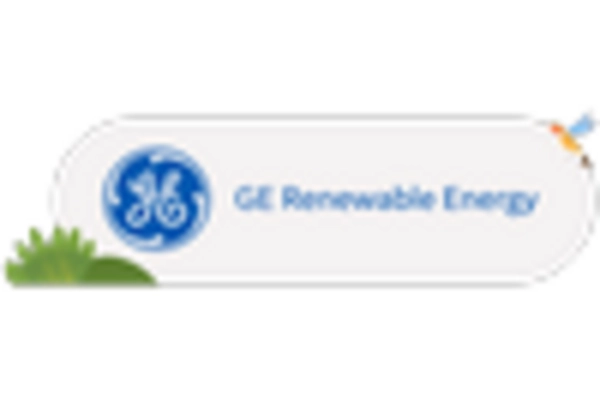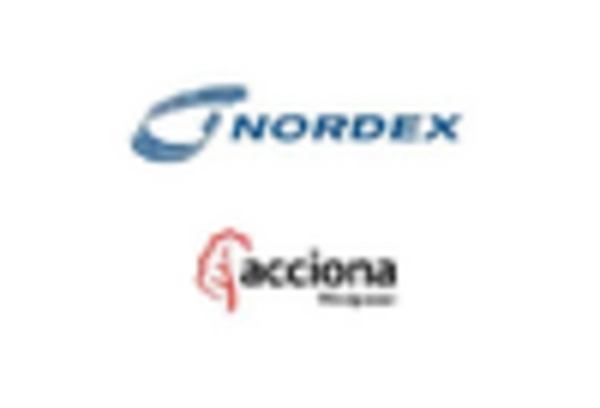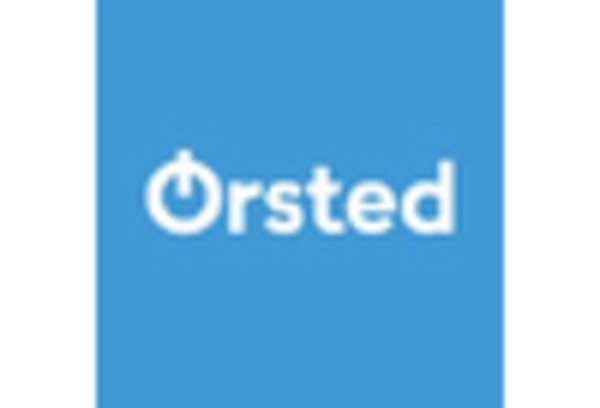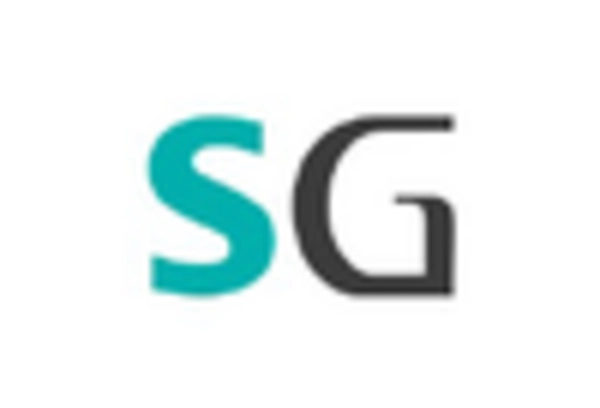The offshore wind market in France is currently characterized by a dynamic competitive landscape, driven by a combination of regulatory support, technological advancements, and increasing demand for renewable energy. Key players such as Ørsted (DK), Siemens Gamesa (ES), and GE Renewable Energy (US) are actively shaping the market through strategic initiatives focused on innovation and regional expansion. Ørsted, for instance, emphasizes its commitment to sustainability and aims to enhance its offshore wind capacity significantly, while Siemens Gamesa is leveraging its technological expertise to optimize turbine efficiency. GE Renewable Energy is also focusing on digital transformation to improve operational performance, collectively fostering a competitive environment that prioritizes innovation and sustainability.
In terms of business tactics, companies are increasingly localizing manufacturing and optimizing supply chains to enhance operational efficiency and reduce costs. The market structure appears moderately fragmented, with several key players exerting influence over their respective segments. This fragmentation allows for a diverse range of strategies, as companies seek to differentiate themselves through unique value propositions and localized solutions.
In October 2025, Ørsted (DK) announced the launch of a new offshore wind project off the coast of Brittany, which is expected to generate approximately 1.5 GW of renewable energy. This strategic move not only reinforces Ørsted's position as a leader in the offshore wind sector but also aligns with France's ambitious renewable energy targets, potentially contributing to a significant reduction in carbon emissions in the region. The project underscores Ørsted's commitment to expanding its footprint in France and enhancing its portfolio of sustainable energy solutions.
In September 2025, Siemens Gamesa (ES) secured a contract to supply its latest wind turbine technology for a major offshore wind farm in the Mediterranean. This development is particularly noteworthy as it highlights Siemens Gamesa's focus on innovation and its ability to meet the growing demand for efficient and reliable wind energy solutions. The deployment of advanced turbine technology is likely to enhance energy output and operational efficiency, positioning Siemens Gamesa favorably in a competitive market.
In August 2025, GE Renewable Energy (US) announced a partnership with a French energy company to co-develop a new offshore wind farm, which is projected to have a capacity of 1 GW. This collaboration not only signifies GE's strategic intent to strengthen its presence in the French market but also reflects a broader trend of strategic alliances among key players. Such partnerships are essential for sharing resources, expertise, and risk, ultimately driving innovation and accelerating project timelines.
As of November 2025, current competitive trends in the offshore wind market are increasingly defined by digitalization, sustainability, and the integration of artificial intelligence (AI) into operational processes. Strategic alliances among companies are shaping the landscape, enabling them to pool resources and enhance technological capabilities. Looking ahead, competitive differentiation is likely to evolve from traditional price-based competition to a focus on innovation, advanced technology, and supply chain reliability. This shift may redefine how companies position themselves in the market, emphasizing the importance of sustainable practices and cutting-edge solutions.

















Leave a Comment